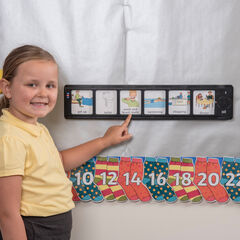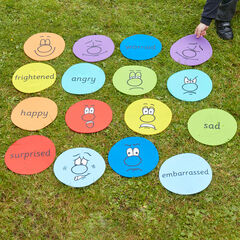We can all experience anxiety. For some it is a temporary state and for others it is a permanent ‘thing’, which can not only impact upon the way that we think, feel and behave but also in a physiological sense.
Many of our pupils with an autism diagnosis can experience anxiety in a more extreme and prolonged way. This can be as a result of many factors such as:
- Differences in sensory processing which can impact upon the way the environment is filtered. This can result in sensory seeking or avoiding behaviour, such as seeking excessive movement or avoiding the touch of others.
- Finding it challenging to manage and adapt to change or a fear of the unknown.
- Difficulties with social situations and making, managing and maintaining friendships.
- Self-monitoring and regulating own emotions.
- Fatigue from working harder than everyone else to manage day-to-day situations and masking your own behaviours to fit in with everyone else.
- Challenges with interpreting unspoken rules.
If we think about it, the classroom is a really busy place. Autistic children could well be dealing with at least thirty other people, managing several transitions a day, dealing with a vast number of implicit nuances and with a minimal amount of control.
When you feel anxious your capacity to think, process and utilise incoming information becomes very challenging. Especially if you feel constantly on edge wondering:
- What might happen next (because you cannot guess)?
- What you are supposed to be doing (because you find it hard to process information)?
- Why your classmates do what they do (because you find unwritten social rules tricky to understand and follow)?
If this your day you can easily end up on red alert, fight or flight mode, where survival is all.
For this reason, and for the general well-being of our autistic young people, it is essential that we understand that their autistic thinking can make coping in the classroom more difficult and scary.
So how can you help?
The following ideas won’t solve everything but could help.
- Provide as much predictability as possible. Routine can equal comfort. Offer support with a visual timeline and as much advance warning as possible.
- Offer sensory experiences that the pupil feels calming and reassuring.
- Encourage the pupil to self-advocate. Agree a discrete ‘help needed’ signal.
- Name it to tame it! Discuss the feeling of anxiety, name it and identify how it makes the pupil feel not just emotionally but physically. Explore the feeling openly and honestly. This can make it feel less scary.
- Flip the feeling. Talk about anxiety in a positive way identifying how it is an important emotion for keeping us safe and should be listened to but managed carefully with some help from appropriate others.
- Teach the pupil to spot their own early warning signs and decide on suitable self-help strategies. This can be supported with a personalised visual self-monitoring and regulation tool such as:

- Teach the pupil to challenge their anxiety by exploring the following framework:
- What is the thought?
- How much do you believe it to be true (rate on a scale)?
- What evidence is there to support this thought?
- And what evidence is there against this thought?
- What would you say to support a friend who had this thought?
- What do you think now?
- Offer a safe space – somewhere the pupil can withdraw to gain much needed rest and respite when things get too much.

- Provide an outlet to ‘park’ the worry such as a worry box or worry doll but make sure that the worries are dealt with at an appropriate point to provide closure.
- Develop a ‘Happy Box’ that the pupil can visit at a difficult time. This can be a personalised box full of things that the pupil takes comfort in. They can visit their ‘Happy Box’ when needed to calm.

One final note, these strategies are super supportive for our autistic pupils but also brilliant for all of the pupils and adults in our schools!
Explore more useful resources within our Special Direct Autism Range.
A huge thank you to Beccie Hawes for writing this blog for us.
About Beccie Hawes
Beccie has worked in all aspects of Special Educational Needs including mainstream, additionally resourced provision and specialist settings. She has extensive experience as a SENCo, Inclusion Manager, Lead Local Authority SEND Advisory Teacher and has set up and led an inclusion advisory service.
Beccie is currently proud to be the Head of Service with Cadmus Inclusive, part of Cadmus Services, which is based in Walsall. This service has a national reach and actively supports schools with all aspects of providing a high quality education for vulnerable learners. Beccie is the author of ‘The Complete Dyslexia Toolkit’ and co-author of ‘Getting it Right for SEND’ and ‘How to Create the Perfect Partnership with Parents’. Beccie also writes the national Ebriefing: SEND Bitesize. She has developed a number of educational resources to support learners which schools across the UK have purchased and use. Beccie remains very ‘hands on’ in the classroom and is passionate about being at the chalk face to support teachers and children to think differently for a brighter tomorrow. She is also the mum to four boys and a dog.






